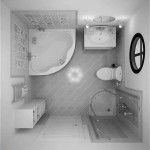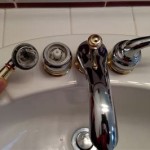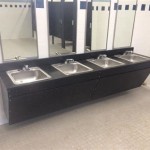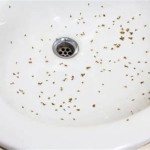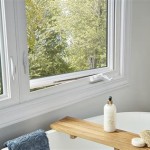Bathroom Drain Smells Like Dirt: Causes and Solutions
A common, and often unsettling, problem encountered in households is a bathroom drain emitting a distinct odor reminiscent of dirt or soil. This issue, while seemingly minor, can indicate underlying problems within the plumbing system and potentially affect the overall air quality of the bathroom. Understanding the potential causes and implementing effective solutions is crucial for maintaining a clean and healthy living environment.
The presence of a dirt-like smell emanating from a bathroom drain is not merely a cosmetic nuisance; it represents a disruption in the normal functioning of the drainage system. This odor originates from the decomposition of organic matter, the accumulation of minerals, or the presence of sewer gases infiltrating the bathroom space. Prompt identification and remediation of the underlying cause is essential to prevent the escalation of the problem and potential health hazards. Ignoring the issue can lead to more significant plumbing problems and a persistent unpleasant odor that permeates the entire bathroom.
Several factors can contribute to a bathroom drain developing a dirt-like smell. These factors can range from simple clogs caused by hair and soap scum to more complex issues like biofilm buildup or problems with the plumbing vent system. A systematic approach to diagnosing the issue is necessary to implement an effective and lasting solution. This article will explore the most common causes of a dirty-smelling bathroom drain, along with practical steps to address the problem and prevent its recurrence.
Biofilm Buildup: A Common Culprit
One of the most prevalent reasons for a bathroom drain emitting a dirty smell is the accumulation of biofilm. Biofilm is a complex community of microorganisms, including bacteria, fungi, and protozoa, that adhere to surfaces in moist environments. In the context of a bathroom drain, biofilm forms as organic materials, such as hair, soap residue, skin cells, and toothpaste, are washed down the drain. These organic materials provide a food source for the microorganisms, allowing them to thrive and multiply, forming a slimy layer on the inner walls of the drainpipe.
The decomposition of organic matter within the biofilm releases volatile organic compounds (VOCs), which are responsible for the unpleasant dirt-like odor. The smell is often described as musty, earthy, or similar to decaying vegetation. The biofilm itself can also trap other debris, further contributing to the build-up and exacerbating the odor. Warm and humid conditions, commonly found in bathrooms, promote the growth and activity of microorganisms in biofilm, making this issue particularly common in bathrooms with poor ventilation.
Addressing biofilm buildup requires a multifaceted approach. Simply flushing the drain with water is insufficient, as it will not effectively remove the sticky biofilm layer. Chemical drain cleaners can be used, but they often contain harsh chemicals that can damage pipes over time. A more environmentally friendly and equally effective solution involves using a combination of baking soda and vinegar. The baking soda acts as a mild abrasive, while the vinegar helps to dissolve organic matter and neutralize odors. Pouring a cup of baking soda down the drain, followed by a cup of vinegar, creates a fizzing action that helps to dislodge and break down the biofilm. After allowing the mixture to sit for about 30 minutes, flush the drain with hot water. This process can be repeated as needed.
Another method for removing biofilm involves physically scrubbing the drainpipe. This can be achieved by using a flexible drain cleaning brush or a plumbing snake. These tools can be inserted into the drain to physically remove the biofilm layer from the pipe walls. It is important to wear gloves and eye protection when using these tools to avoid contact with potentially harmful bacteria and debris. Regular cleaning of the drain with these methods can help to prevent the buildup of biofilm and the associated odors.
Preventing biofilm buildup requires proactive measures. Regularly flushing the drain with hot water after each use can help to remove loose debris and prevent the accumulation of organic matter. Using a drain strainer to catch hair and other debris before they enter the drainpipe can significantly reduce the food source for biofilm. Avoiding the disposal of grease and other oily substances down the drain is also crucial, as these substances can contribute to the formation of biofilm. Ensuring proper ventilation in the bathroom can help to reduce humidity levels, which can inhibit the growth of microorganisms in biofilm.
Plumbing Vent Issues: The Role of Proper Ventilation
The plumbing vent system plays a crucial role in maintaining proper drainage and preventing sewer gases from entering the home. This system consists of a network of pipes that vent to the outside, allowing air to enter the plumbing system and equalize pressure. This prevents a vacuum from forming in the drainpipes, which can impede the flow of water and allow sewer gases to escape through the drains.
When the plumbing vent system is blocked or malfunctioning, it can disrupt the normal flow of air and cause negative pressure within the drainpipes. This negative pressure can then draw sewer gases up through the drain traps, releasing them into the bathroom. Sewer gases contain a variety of odorous compounds, including hydrogen sulfide, which has a characteristic rotten egg smell. However, depending on the specific composition of the sewer gases, the odor can sometimes be perceived as dirt-like or musty.
Common causes of plumbing vent blockage include bird nests, leaves, snow, or other debris that can accumulate in the vent opening on the roof. In some cases, the vent pipe may be improperly installed or damaged, leading to restricted airflow. Identifying and addressing plumbing vent issues requires accessing the roof and inspecting the vent opening for any obstructions. This task is best left to a professional plumber, as it can be dangerous to work on a roof without proper safety equipment and experience.
If a blockage is found, it can be carefully removed using appropriate tools. It is important to avoid pushing the debris further into the vent pipe, as this can exacerbate the problem. After removing the blockage, it is advisable to flush the vent pipe with water to ensure that it is clear. Installing a vent screen can help to prevent future blockages by preventing debris from entering the vent opening. Regular inspection and maintenance of the plumbing vent system are essential for preventing odors and ensuring proper drainage.
In addition to blockages, other plumbing vent issues can contribute to odors. If the vent pipe is too small or improperly sized, it may not provide adequate ventilation for the plumbing system. This can lead to negative pressure and the escape of sewer gases. In such cases, the vent pipe may need to be replaced with a larger diameter pipe. Similarly, if the vent pipe is located too close to windows or air intakes, the sewer gases can be drawn into the home, even if the vent system is functioning properly. Relocating the vent pipe may be necessary to prevent this issue.
A properly functioning plumbing vent system is critical for maintaining a healthy and odor-free home. Regularly inspecting and maintaining the vent system can help to prevent blockages and ensure that it is providing adequate ventilation. If sewer gas odors are persistent, it is best to consult with a qualified plumber to diagnose and address any underlying issues with the plumbing vent system.
Dry P-Traps: Preventing Sewer Gas Intrusion
The P-trap is a U-shaped section of pipe located under the bathroom sink, shower, and bathtub. Its primary function is to trap a small amount of water, creating a seal that prevents sewer gases from entering the bathroom through the drain. This water barrier effectively blocks the passage of odors and harmful gases from the sewer system.
When a P-trap dries out, the water seal is lost, allowing sewer gases to freely flow into the bathroom. This can result in a noticeable odor that is often described as sewer-like, rotten egg, or, in some cases, a dirt-like or musty smell. A dry P-trap can occur for several reasons, including infrequent use of the fixture, evaporation, or siphoning.
If a bathroom fixture is not used regularly, the water in the P-trap can slowly evaporate over time, especially in dry climates or during periods of low humidity. This is particularly common in guest bathrooms or vacation homes that are not used frequently. To prevent the P-trap from drying out, it is recommended to periodically run water down the drain for a few minutes. This will replenish the water in the P-trap and maintain the seal.
Siphoning can also cause a P-trap to dry out. This occurs when the water in the drain is rapidly pulled away, creating a suction that drains the P-trap. Siphoning can be caused by a variety of factors, including a partially blocked drain line, a malfunctioning plumbing vent system, or the simultaneous draining of multiple fixtures. To prevent siphoning, it is important to ensure that the drain lines are clear of obstructions and that the plumbing vent system is functioning properly. Installing an air admittance valve (AAV) can also help to prevent siphoning by allowing air to enter the drainpipe and equalize pressure.
Identifying a dry P-trap is relatively straightforward. If a dirt-like or sewer-like odor is present in the bathroom, particularly after a period of infrequent use, a dry P-trap is a likely culprit. To remedy the situation, simply run water down the drain for a few minutes. This will refill the P-trap and restore the water seal. If the odor persists after refilling the P-trap, it may indicate a more serious problem, such as a leak in the drainpipe or a malfunctioning plumbing vent system.
In addition to dry P-traps, other issues with the P-trap itself can contribute to odors. If the P-trap is cracked or damaged, it may leak water, preventing it from maintaining a proper seal. In such cases, the P-trap will need to be replaced. Similarly, if the P-trap is improperly installed or not properly aligned, it may not function correctly, allowing sewer gases to escape. Ensuring that the P-trap is properly installed and maintained is essential for preventing odors and ensuring proper drainage.

Why Does My Shower Drain Smell Bad Kay Plumbing Heating And Cooling

Bathroom Smells Like Sewage Causes Fixes Inside Out

3 Plumbing Issues That Cause Bad Odor In Your Bathroom Ideas By Mr Right

Bathroom Smells Like Sewage Causes Fixes Inside Out

What Would Cause An Onion Smell In A Shower Drain Hunker

Why Does My Shower Drain Smell

Why Does My Shower Drain Smell Drainpro

How To Remove Musty Odors From Kitchen Sink Water Damage

Why Your Shower Drain Smells Like Sewage And How To Fix It

Moldy Smelling Water From Bathroom Faucet Hometalk
Related Posts

